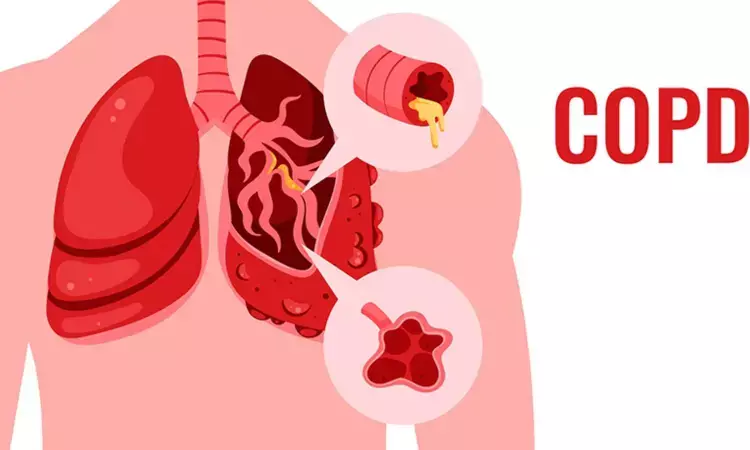- Home
- Medical news & Guidelines
- Anesthesiology
- Cardiology and CTVS
- Critical Care
- Dentistry
- Dermatology
- Diabetes and Endocrinology
- ENT
- Gastroenterology
- Medicine
- Nephrology
- Neurology
- Obstretics-Gynaecology
- Oncology
- Ophthalmology
- Orthopaedics
- Pediatrics-Neonatology
- Psychiatry
- Pulmonology
- Radiology
- Surgery
- Urology
- Laboratory Medicine
- Diet
- Nursing
- Paramedical
- Physiotherapy
- Health news
- Fact Check
- Bone Health Fact Check
- Brain Health Fact Check
- Cancer Related Fact Check
- Child Care Fact Check
- Dental and oral health fact check
- Diabetes and metabolic health fact check
- Diet and Nutrition Fact Check
- Eye and ENT Care Fact Check
- Fitness fact check
- Gut health fact check
- Heart health fact check
- Kidney health fact check
- Medical education fact check
- Men's health fact check
- Respiratory fact check
- Skin and hair care fact check
- Vaccine and Immunization fact check
- Women's health fact check
- AYUSH
- State News
- Andaman and Nicobar Islands
- Andhra Pradesh
- Arunachal Pradesh
- Assam
- Bihar
- Chandigarh
- Chattisgarh
- Dadra and Nagar Haveli
- Daman and Diu
- Delhi
- Goa
- Gujarat
- Haryana
- Himachal Pradesh
- Jammu & Kashmir
- Jharkhand
- Karnataka
- Kerala
- Ladakh
- Lakshadweep
- Madhya Pradesh
- Maharashtra
- Manipur
- Meghalaya
- Mizoram
- Nagaland
- Odisha
- Puducherry
- Punjab
- Rajasthan
- Sikkim
- Tamil Nadu
- Telangana
- Tripura
- Uttar Pradesh
- Uttrakhand
- West Bengal
- Medical Education
- Industry
High-Intensity NPPV Reduces Intubation Need in COPD Patients with Persistent Hypercapnia: JAMA

A new study published in the Journal of American Medical Association found that acute exacerbations of chronic obstructive pulmonary disease (COPD) may require less endotracheal intubation when high-intensity noninvasive positive pressure ventilation (NPPV) is used to treat persistent hypercapnia.
Due to the uncertainty around how high-intensity noninvasive positive pressure ventilation affects patients who have an acute exacerbation of chronic obstructive pulmonary disease in terms of the necessity for endotracheal intubation. Thus, this study by Zujin Luo and colleagues was to ascertain if endotracheal intubation is less necessary in patients facing an acute exacerbation of COPD and hypercapnia when high-intensity NPPV is used as opposed to low-intensity NPPV.
This randomized clinical study that took place in 30 general respiratory non-intensive care unit wards in Chinese hospitals between January 3, 2019, and January 31, 2022 following by a 90-day follow-up was on April 22, 2022. Following 6 hours of low-intensity NPPV, the patients included experienced an acute exacerbation of COPD and a Paco2 level higher than 45 mm Hg. In a 1:1 randomization, patients were assigned to either receive low-intensity NPPV with inspiratory positive airway pressure modified to obtain a tidal volume of 6 mL/kg to 10 mL/kg of anticipated body weight (n = 153) or high-intensity NPPV with inspiratory positive airway pressure adjusted to obtain a tidal volume of 10 mL/kg to 15 mL/kg of predicted body weight (n = 147).
The individuals in the low-intensity NPPV group were eligible to transition to the high-intensity NPPV group if they satisfied the predetermined requirements for endotracheal intubation. As determined by predetermined criteria, the main outcome was the requirement for endotracheal intubation while the patient was in the hospital. One of the 15 predetermined secondary outcomes was endotracheal intubation.
Following an interim study of the first 300 patients, the data and safety monitoring board and trial steering committee decided to stop the experiment, where all 300 of the patients finished the experiment. The primary outcome of satisfying prespecified criteria for the requirement for endotracheal intubation took place in 7 of 147 patients (4.8%) in the high-intensity NPPV group and 21 of 153 (13.7%) in the low-intensity NPPV group. However, the rates of endotracheal intubation were not substantially different across the groups. The high-intensity NPPV group had a higher incidence of abdominal distension than the low-intensity NPPV group. Overall, in the high-intensity NPPV group, the likelihood of patients with COPD and chronic hypercapnia meeting the requirements for endotracheal intubation was much lower.
Source:
Effect of high-intensity vs low-intensity noninvasive positive pressure ventilation on the need for endotracheal intubation in patients with an acute exacerbation of chronic obstructive pulmonary disease: The HAPPEN randomized clinical trial. (2024). JAMA. https://doi.org/10.1001/jama.2024.15815
Neuroscience Masters graduate
Jacinthlyn Sylvia, a Neuroscience Master's graduate from Chennai has worked extensively in deciphering the neurobiology of cognition and motor control in aging. She also has spread-out exposure to Neurosurgery from her Bachelor’s. She is currently involved in active Neuro-Oncology research. She is an upcoming neuroscientist with a fiery passion for writing. Her news cover at Medical Dialogues feature recent discoveries and updates from the healthcare and biomedical research fields. She can be reached at editorial@medicaldialogues.in
Dr Kamal Kant Kohli-MBBS, DTCD- a chest specialist with more than 30 years of practice and a flair for writing clinical articles, Dr Kamal Kant Kohli joined Medical Dialogues as a Chief Editor of Medical News. Besides writing articles, as an editor, he proofreads and verifies all the medical content published on Medical Dialogues including those coming from journals, studies,medical conferences,guidelines etc. Email: drkohli@medicaldialogues.in. Contact no. 011-43720751


